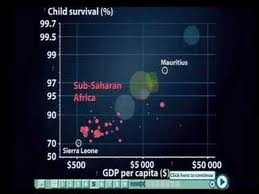Marketing Stakeholder Analysis Fundamentals
Stakeholder analysis is the identification and examination of marketing stakeholder interests, influences, expectations and attitudes as they relate to a project (e.g. rollout of a marketing automation platform, standardized marketing reporting or data quality initiative).
Its purpose is to understand the political and people-oriented aspects of the project environment, and the processes and functions that impact (or are impacted by) the project. The result is a better understanding of the stakeholders (e.g. interests, relationships), better decisionmaking and greater project acceptance by stakeholders.


 You’ve never seen data presented like this. With the drama and urgency of a sportscaster, statistics guru Hans Rosling debunks myths about the so-called “developing world.”
You’ve never seen data presented like this. With the drama and urgency of a sportscaster, statistics guru Hans Rosling debunks myths about the so-called “developing world.”